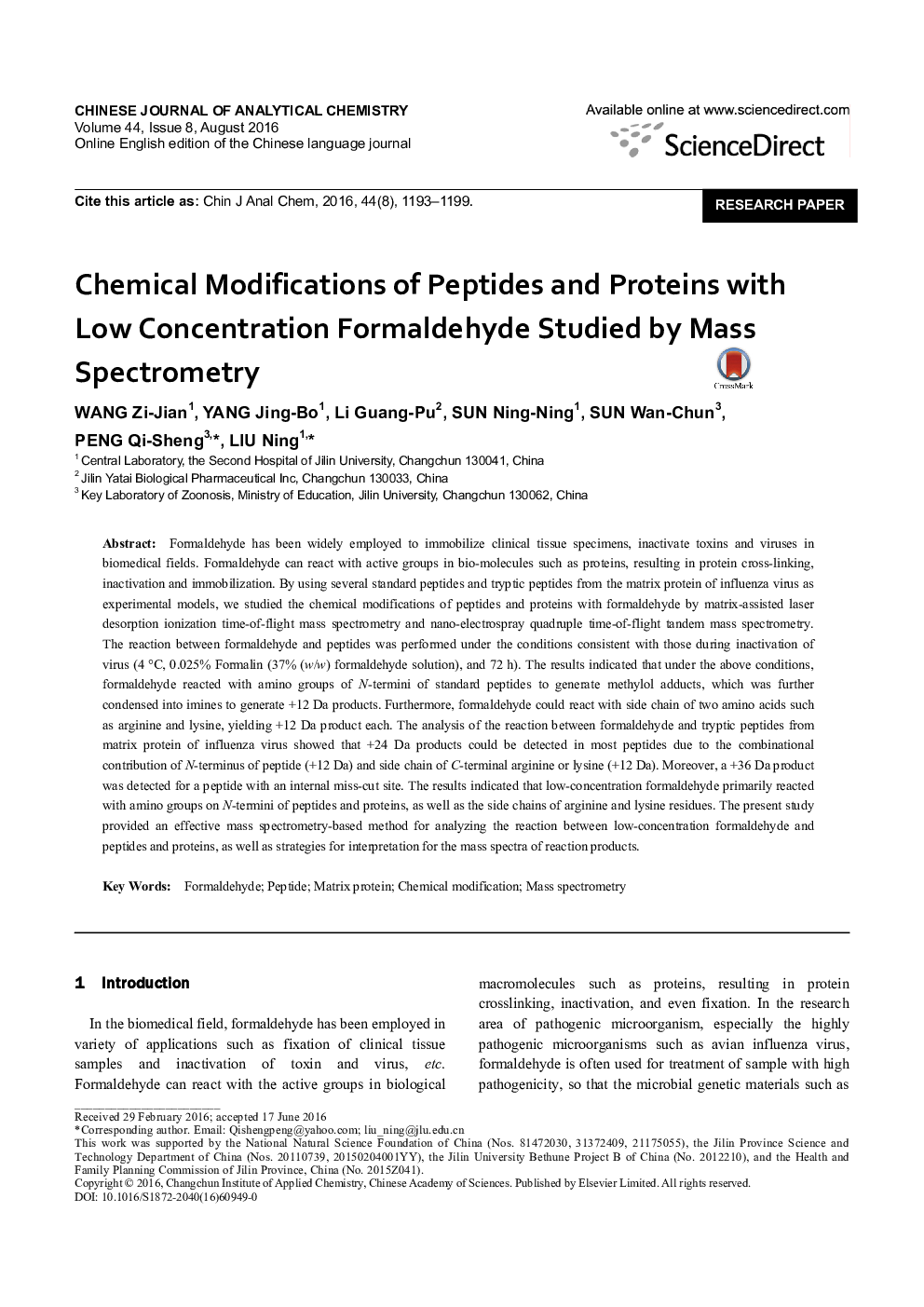| کد مقاله | کد نشریه | سال انتشار | مقاله انگلیسی | نسخه تمام متن |
|---|---|---|---|---|
| 1181960 | 1491610 | 2016 | 7 صفحه PDF | دانلود رایگان |
Formaldehyde has been widely employed to immobilize clinical tissue specimens, inactivate toxins and viruses in biomedical fields. Formaldehyde can react with active groups in bio-molecules such as proteins, resulting in protein cross-linking, inactivation and immobilization. By using several standard peptides and tryptic peptides from the matrix protein of influenza virus as experimental models, we studied the chemical modifications of peptides and proteins with formaldehyde by matrix-assisted laser desorption ionization time-of-flight mass spectrometry and nano-electrospray quadruple time-of-flight tandem mass spectrometry. The reaction between formaldehyde and peptides was performed under the conditions consistent with those during inactivation of virus (4 °C, 0.025% Formalin (37% (w/w) formaldehyde solution), and 72 h). The results indicated that under the above conditions, formaldehyde reacted with amino groups of N-termini of standard peptides to generate methylol adducts, which was further condensed into imines to generate +12 Da products. Furthermore, formaldehyde could react with side chain of two amino acids such as arginine and lysine, yielding +12 Da product each. The analysis of the reaction between formaldehyde and tryptic peptides from matrix protein of influenza virus showed that +24 Da products could be detected in most peptides due to the combinational contribution of N-terminus of peptide (+12 Da) and side chain of C-terminal arginine or lysine (+12 Da). Moreover, a +36 Da product was detected for a peptide with an internal miss-cut site. The results indicated that low-concentration formaldehyde primarily reacted with amino groups on N-termini of peptides and proteins, as well as the side chains of arginine and lysine residues. The present study provided an effective mass spectrometry-based method for analyzing the reaction between low-concentration formaldehyde and peptides and proteins, as well as strategies for interpretation for the mass spectra of reaction products.
Mass spectrometry analysis reveals that low concentration formaldehyde can readily react with the free amino groups of both N-terminal and side chain of protein to generate a methylol adduct, which is then condensed into an imine (+12Da) by losing a molecule of water.Figure optionsDownload as PowerPoint slide
Journal: Chinese Journal of Analytical Chemistry - Volume 44, Issue 8, August 2016, Pages 1193–1199
